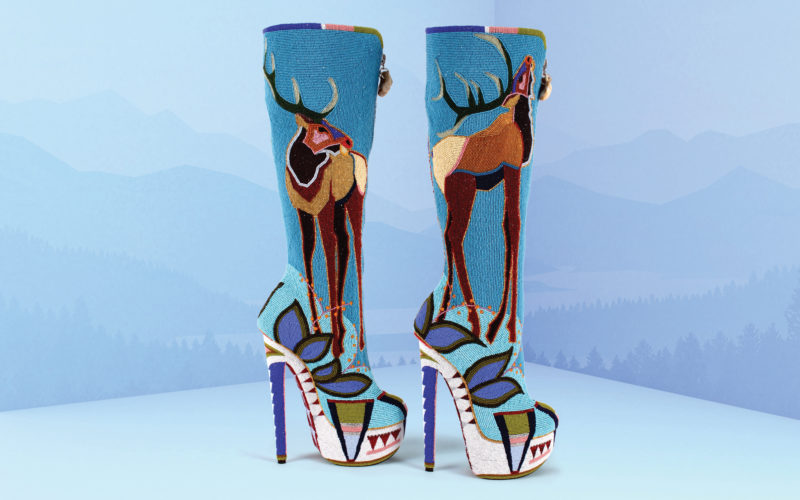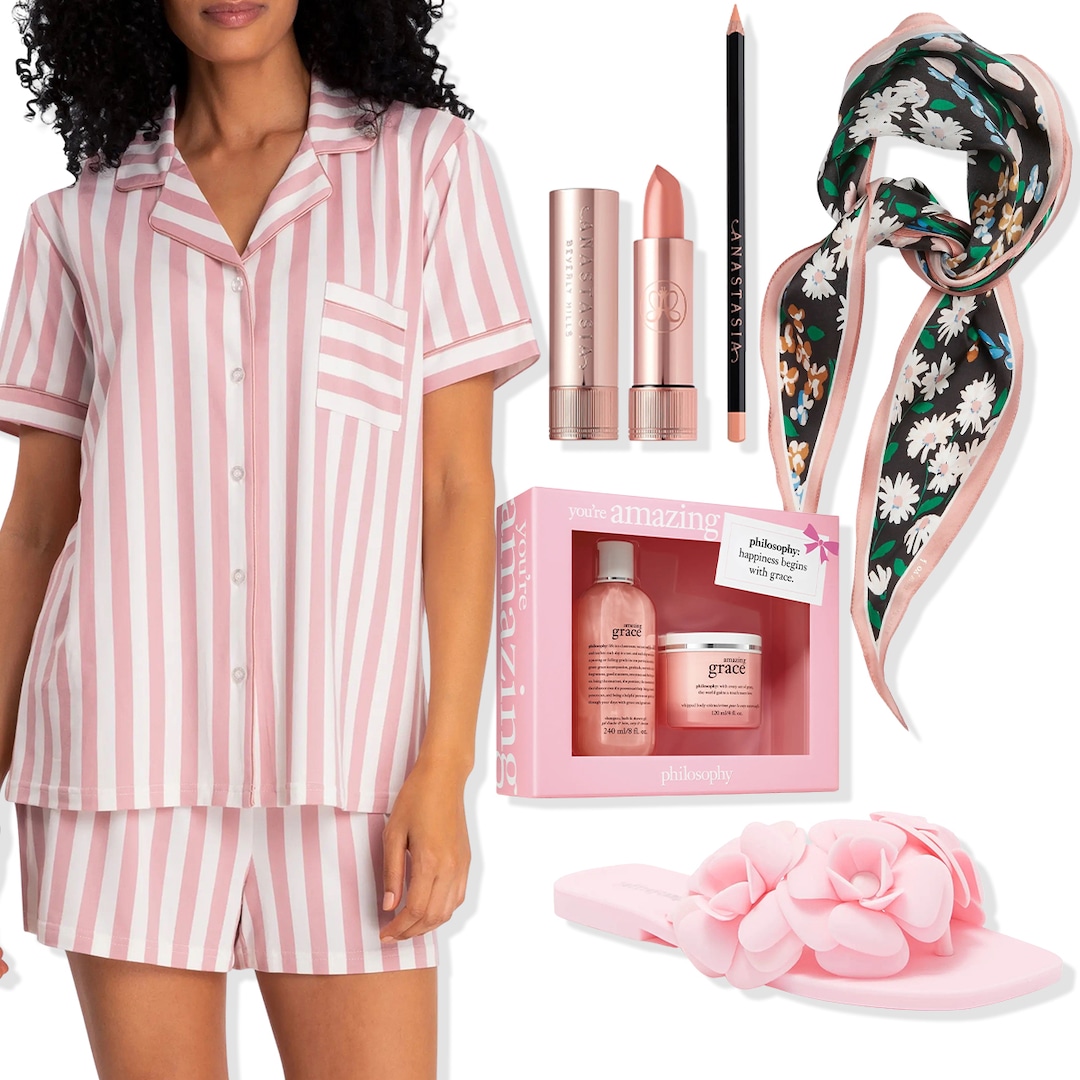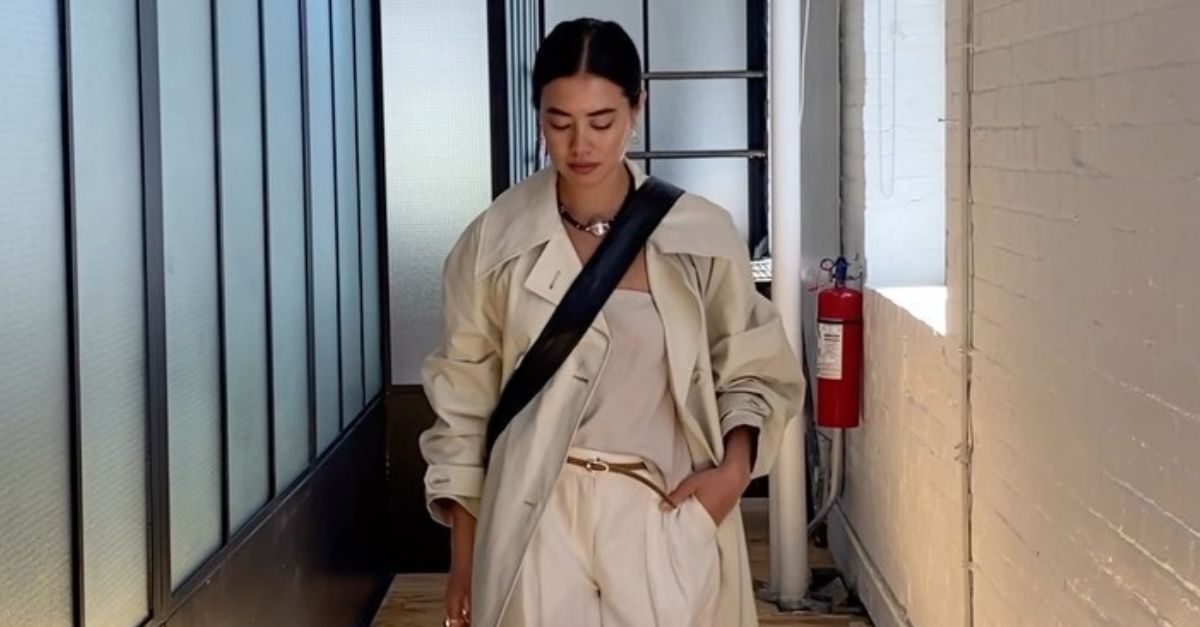From intricately beaded suits to wearable art with embroidered storytelling, here are seven artists redefining how we create — and consume — fashion.
Should we stop celebrating Earth Day? It’s not an entirely unfair question.
In theory, the annual event, held on April 22, is a time to raise environmental awareness and, where fashion is concerned, spark conversations around mindful consumption. In practice, however, it evokes greenwashing. Big-box brands launch campaigns with flashy eco-friendly marketing and buzzwords about honouring Mother Earth. “This year, several Earth Day campaigns have a philanthropic slant,” Vogue recently noted. But often, the grandiose sustainability claims lack external verification and the materials employed aren’t all that environmentally friendly. And in the long run, this only encourages more consumption. It also promotes the idea that clothing brands should be churning out sustainably-labelled products based on industry timelines. In that vein, Earth Day has been commercialized into its own kind of trend.
Where marketing is concerned, many sustainable brands have forgone Earth Day observations altogether. Indigenous artists, specifically, are trailblazers of slow fashion as a standard practice. “My father grew up on the land,” wrote Cree author David A. Robertson in FASHION’s April 2022 issue. “He told me that time works differently for Indigenous people. There was never a need to rush; it was about patience and following the patterns of the animals: taking what you needed, not what you wanted, to preserve the land and its resources.” Take beadwork — a pillar of Indigenous design — which requires intentionality and merges art, fashion and storytelling. “Beading is part of our survivance story, and through it, I celebrate the immense strength of our people,” jeweller Catherine Blackburn told FLARE in 2019. “It becomes a tool and practice of resistance.”
Instead of conforming to the trend cycle and seasonal runway demands, many Indigenous designers work on their own timelines. “Often I will go to an Indigenous creator’s site and everything will be sold out because they are handcrafting, sometimes with materials that are coming from the land, and in very small batches,” says FASHION editor-in-chief Bernadette Morra. She notes that some artists may simply close commissions, no reasons given. “It’s a completely different way of thinking about fashion and one that I have a huge respect for because it is slow, thoughtful, and creator-centric.” And isn’t that the core ethos behind Earth Day?
Instead of finding new deals to shop, this year, try familiarizing yourself with Indigenous designers who are creating mindfully, all year round. Below, FASHION highlighted seven.
Anne Mulaire
Anne Mulaire’s eponymous clothing brand is made entirely in Canada with designs inspired by her Indigenous heritage. As such, prints are handcrafted by her father, Métis Elder David Albert. A former art teacher, Albert’s work is embedded with storytelling, from an embroidered prairie flower symbolizing pride to an Eagle feather representing unity among Indigenous communities.
Justine Woods
The Toronto-based garment artist, designer, educator and scholar uses Indigenous fashion practices as a means of exploring Indigenous resurgence and liberation. She is a Penetanguishene Aabitaawikwe, whose extensive portfolio includes a bespoke beaded suit collection that pushes back on Western norms of professional wear and a multicoloured ribbon skirt inspired by a dream about swimming with her ancestors.
Catherine Blackburn
A member of the English River First Nation, Catherine Blackburn is a multidisciplinary artist and jeweller. A throughline of her work is using fashion to spark a dialogue about history, specifically addressing Canada’s colonial past. Employing beadwork and other historical adornment techniques, Blackburn’s work explores themes of Indigenous sovereignty, decolonization and representation.
Lynette La Fontaine
“The process of creating is healing for me,” writes Two-Spirit Métis mixed media artist Lynette La Fontaine on their website. “Emotionally, mentally, spiritually and physically.” Working with materials like plants, animals, and fish, they create jewelry, accessories, home decor, and wearable art following Métis traditions. Their method is infused with storytelling and guided by their intuition.
Jennifer Younger
Raised in the Southeast Alaska town of Yakutat, designer Jennifer Younger is Tlingit of the Eagle Kaagwaantaan clan and resides in Sitka, Alaska. She uses the contrast and texture of metals in her work and draws inspiration from Tlingit formline designs. All of her one-of-a-kind pieces are crafted with care — from handmade and assembled jewelry to engraved creations.
Justin Jacob Louis
In 2016, Justin Jacob Louis founded cult-favourite streetwear brand Section 35 with the intention of using art and fashion to tell stories from his culture. As a member of the Samson Cree Nation, his designs — ranging from hoodies to cargo pants — strike an eye-catching balance by blending the past with the present.
Jamie Okuma
Jamie Okuma’s work spans from beaded bomber jackets to fringed dresses, and the designer has recently been added to the CFDA‘s coveted membership roster. Residing in Southern California, she specializes in handmade one-of-a-kind pieces and ready-to-wear fashions. Her work celebrates the combination of Indigenous art with fashion, categorizing garments as “Art to Wear” and “Art to Adorn.”


























































![Mason Ramsey – Twang [Official Music Video] Mason Ramsey – Twang [Official Music Video]](https://i.ytimg.com/vi/xwe8F_AhLY0/maxresdefault.jpg)





















